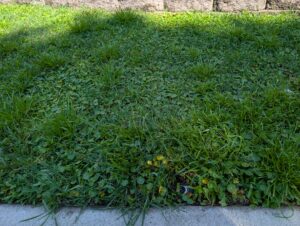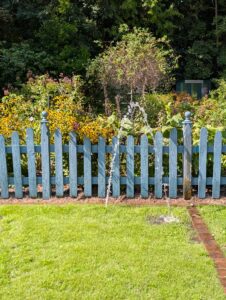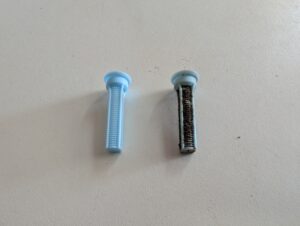Importance of Properly Functioning Irrigation Systems
go.ncsu.edu/readext?1098507
en Español / em Português
El inglés es el idioma de control de esta página. En la medida en que haya algún conflicto entre la traducción al inglés y la traducción, el inglés prevalece.
Al hacer clic en el enlace de traducción se activa un servicio de traducción gratuito para convertir la página al español. Al igual que con cualquier traducción por Internet, la conversión no es sensible al contexto y puede que no traduzca el texto en su significado original. NC State Extension no garantiza la exactitud del texto traducido. Por favor, tenga en cuenta que algunas aplicaciones y/o servicios pueden no funcionar como se espera cuando se traducen.
Português
Inglês é o idioma de controle desta página. Na medida que haja algum conflito entre o texto original em Inglês e a tradução, o Inglês prevalece.
Ao clicar no link de tradução, um serviço gratuito de tradução será ativado para converter a página para o Português. Como em qualquer tradução pela internet, a conversão não é sensivel ao contexto e pode não ocorrer a tradução para o significado orginal. O serviço de Extensão da Carolina do Norte (NC State Extension) não garante a exatidão do texto traduzido. Por favor, observe que algumas funções ou serviços podem não funcionar como esperado após a tradução.
English
English is the controlling language of this page. To the extent there is any conflict between the English text and the translation, English controls.
Clicking on the translation link activates a free translation service to convert the page to Spanish. As with any Internet translation, the conversion is not context-sensitive and may not translate the text to its original meaning. NC State Extension does not guarantee the accuracy of the translated text. Please note that some applications and/or services may not function as expected when translated.
Collapse ▲
Are you struggling with an unsightly patch in your lawn? It may be an irrigation problem. Here at the N.C. Cooperative Extension, New Hanover County Center & Arboretum, we recently completed an annual check of all the irrigation systems on the grounds. Sprinkler systems can easily get disturbed by people, machinery, animals, or even plant roots, so it is important to check irrigation systems regularly for proper functionality.
Many times, sprinkler system fixes can be easy, but there are occasions when you may want to investigate further before committing time and money into special turf products. Irrigation systems that are not operating correctly can cause bare patches in turf, encourage weeds, and even contribute to erosion.
Let’s look at some common issues that arise when maintaining irrigation systems –

If an area of your turf is struggling, it is a good idea to turn on your irrigation system and check if any spots are not properly operating. Sometimes it is obvious, such as a broken spray nozzle, which is identifiable when a geyser of water (like the one pictured) is present. A broken spray nozzle can be damaging to turf and waste water, but by simply replacing the nozzle, you can get the sprinkler back up and running smoothly. You may also see a sprinkler head that has been knocked to one side and is spraying pressurized water into a singular spot of turf. This can be caused by intruding roots, heavy machinery, or digging animals, which can lead to a bare spot or even a hole where the soil is being eroded.
 Another common issue is if the sprinkler head is not spraying any water or is spraying very little water. This can be due to a clogged nozzle, a clogged filter, or a broken pipe between the sprinkler and the water source. The nozzle and filter may need to be cleaned or replaced, but if there is a leak, it can be harder to spot. Usually, such a leak causes water to well up to the surface and may waterlog your turf. To identify this issue, walk around your yard while the sprinkler system is running and look for any pools of water that are accumulating rapidly, especially around areas of turf that seem to be struggling. Once you have found the pools of water, you should then be able to dig down and find the source of the leak.
Another common issue is if the sprinkler head is not spraying any water or is spraying very little water. This can be due to a clogged nozzle, a clogged filter, or a broken pipe between the sprinkler and the water source. The nozzle and filter may need to be cleaned or replaced, but if there is a leak, it can be harder to spot. Usually, such a leak causes water to well up to the surface and may waterlog your turf. To identify this issue, walk around your yard while the sprinkler system is running and look for any pools of water that are accumulating rapidly, especially around areas of turf that seem to be struggling. Once you have found the pools of water, you should then be able to dig down and find the source of the leak.
Just as drought can be damaging to turf, too much water can be harmful too. Make sure to check your irrigation system regularly so you can identify when a faulty sprinkler head is the cause of your turf troubles.
Madeline Maynard serves as the Extension Technician at the N.C. Cooperative Extension, New Hanover County Center and Arboretum, located at 6206 Oleander Drive. For more information about irrigation systems, contact Madeline at mmaynar@ncsu.edu or 910-798-7600.




